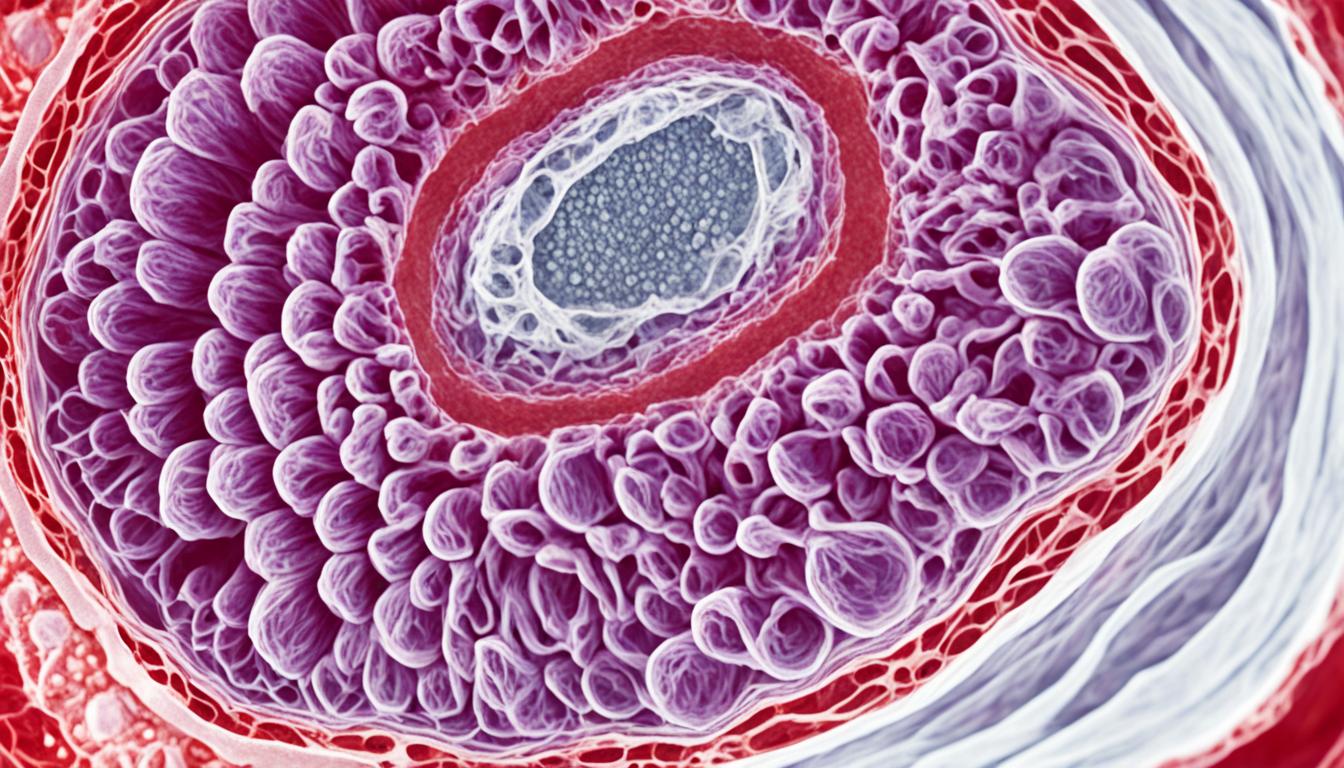Uterine polyps are growths in the uterus’s inner lining. They can stick out from the lining like a stalk or base. These growths are mostly not cancerous but can cause problems if not treated. They often affect menstrual cycles and fertility. Symptoms vary but can include heavy or long periods and bleeding between periods. People might also feel pelvic pain, have trouble getting pregnant, or experience miscarriages.
The exact cause of uterine polyps is unknown. They seem to be linked to too much estrogen and ongoing uterine lining inflammation. Doctors diagnose uterine polyps using tests like a transvaginal ultrasound, hysteroscopy, or endometrial biopsy.
Treating uterine polyps focuses on easing symptoms and enhancing uterine health. Doctors might prescribe medication to manage symptoms. For more severe cases or fertility problems, a procedure known as a polypectomy can remove them. Sometimes, stem cell therapy is an option. This method helps repair the uterus lining and support reproductive health.
Key Takeaways:
- Uterine polyps are abnormal growths in the inner lining of the uterus.
- They can cause symptoms such as abnormal uterine bleeding, pelvic pain, and infertility.
- Hormonal imbalances and chronic inflammation are associated with the development of uterine polyps.
- Diagnosis involves tests such as transvaginal ultrasound, hysteroscopy, or endometrial biopsy.
- Treatment options include medication, polypectomy, or stem cell therapy.
Understanding Uterine Polyps: Causes and Symptoms
Uterine polyps are small growths in the uterus’s inner lining. The exact cause is unknown, but they likely stem from hormonal imbalances. High levels of estrogen seem to be a key factor in their development.
These polyps result in different symptoms, mainly abnormal uterine bleeding. This bleeding can be heavy, last a long time, or happen between periods. They might also lead to pelvic pain and fertility issues or recurrent miscarriages.
It’s vital for women to know these symptoms and act if they notice them. Finding and treating uterine polyps early can prevent further issues and boost reproductive health. Stay in touch with your doctor for routine checks and discussions.
If you think you have uterine polyps or are showing symptoms like odd bleeding or infertility, see a doctor. They will do tests to confirm your diagnosis and offer a treatment plan tailored to your needs.
Possible Symptoms of Uterine Polyps:
- Abnormal uterine bleeding
- Heavy or prolonged periods
- Bleeding between periods
- Pelvic pain or discomfort
Diagnosing Uterine Polyps:
To confirm uterine polyps, doctors use specific tests. These may include a transvaginal ultrasound, hysteroscopy, or endometrial biopsy. These exams help your doctor see your uterus lining up close and pick the right treatment path.
| Treatment Options for Uterine Polyps | Description |
|---|---|
| Medication | Prescribed to manage symptoms and regulate hormonal imbalances. |
| Polypectomy | Surgical removal of polyps. It’s done by hysteroscopy or other less invasive methods. |
| Stem Cell Therapy | In some cases, stem cell therapy can help renew the uterus lining, boosting reproductive health. |
Diagnosing and Treating Uterine Polyps
Finding uterine polyps involves specific tests to spot and check these growths. Doctors use various methods to diagnose them. This info helps them choose the right treatment plan. Tests may include hysteroscopy, transvaginal ultrasound, and an endometrial biopsy.
Hysteroscopy
Hysteroscopy lets doctors look directly at the uterine lining. A hysteroscope, a thin tube with a camera, is gently put into the uterus through the vagina. This way, the doctor can see and evaluate the polyps. The same procedure can remove the polyps, offering both diagnosis and treatment.
Transvaginal Ultrasound
Transvaginal ultrasound takes images of the pelvic area without being invasive. A probe is inserted in the vagina to see the uterus closely. This method shows the size, number, and where the polyps are. It helps in planning how to treat them.
Endometrial Biopsy
Endometrial biopsy means taking samples from the uterus lining. A thin tube is used to get these samples. Looking at these under a microscope shows if there are any polyps. This gives doctors key details for the best way to treat.
Treatment for uterine polyps is based on the person, their symptoms, and health. If polyps cause a lot of issues, they might be taken out by surgery. This is done during hysteroscopy. Medicines can also help with symptoms like heavy bleeding and pain. Sometimes, a therapy called stem cell therapy is used to improve the uterus lining. This can balance hormones and aid in reproductive health.
When uterine polyps are found and treated right, it can ease symptoms and better reproductive health. This leads to an overall improvement in the quality of life for those with uterine polyps.
Conclusion
Uterine polyps are common growths in the uterus lining. They can affect a woman’s ability to have children. These growths often make periods abnormal and cause pain.
Doctors use hysteroscopy and ultrasound to look for polyps. Treatment includes medicines to lessen symptoms. Severe cases might need surgery to remove the polyps.
In some cases, stem cell therapy can help repair the uterus lining. It is important for women to notice the signs of uterine polyps. By staying informed, they can protect their reproductive health.

